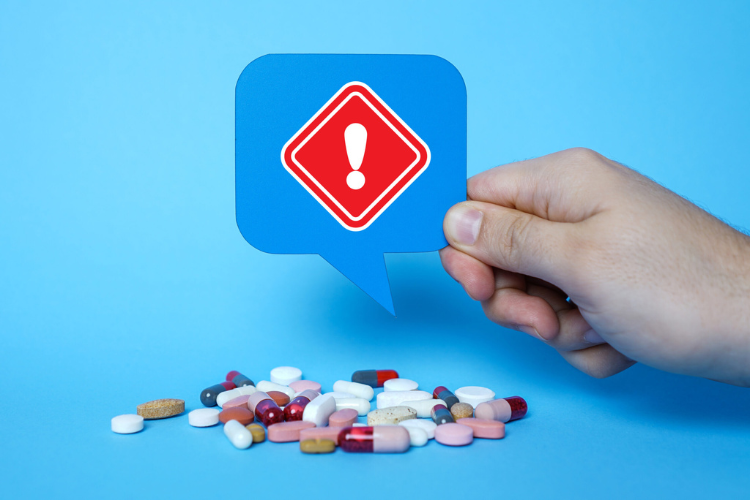Every year, millions of people are affected by medical errors. Although many medical errors are minor and cause little to no harm, others can result in serious injury, disability, or even death. In the United States, medical errors are the third leading cause of death, after heart disease and cancer. The cost of medical errors is estimated to be more than $20B a year and 100,000-plus lives. In this article, we’ll outline what is the number one error in healthcare, other common errors, potential consequences, and what can be done to prevent them.
What is a Medical Error?
The Institute of Medicine (IOM) defines medical errors as “the failure of a planned action to be completed as intended or the use of a wrong plan to achieve an aim.” Medical errors can occur at any stage of the healthcare process, from diagnosis to treatment to follow-up care, and in any healthcare setting, including hospitals, clinics, nursing homes, and even at home.
Medical errors are defined as any preventable adverse event that occurs to a patient during the provision of healthcare services. These errors can range from minor issues, such as medication mix-ups, to more serious events, like surgical mistakes or misdiagnoses. Medical errors can cause a variety of problems for patients, including:
- Physical injury
- Disability
- Death
- Emotional distress
- Financial hardship
What is the Number One Error in Healthcare?
The most prevalent medical error is medication errors. Globally, medication errors cost an estimated $42B USD annually, according to the World Health Organization (WHO). Mistakes account for more than 250,000 U.S. deaths every year and can occur at any stage of the medication process, from prescribing to dispensing to administration. These errors can have serious consequences for patients, including injury, disability, and even death.
Medication errors can occur for a variety of reasons, including:
- Illegible handwriting
- Incorrect dosages
- Mix-ups between similar-sounding medications
- Failure to check for drug allergies
- Lack of communication between healthcare professionals
The Top Five Healthcare Errors
Medication errors top the list of healthcare mistakes. Here are those ranked 2-5:
- Surgical Errors: It’s estimated that more than 4,000 surgical errors occur annually in U.S. operating rooms, according to the National Institutes of Health (NIH). These range from leaving instruments in a patient’s body, operating on the wrong part of the body, performing the wrong surgery, and missing foreign bodies (tumors, etc.).
- Diagnostic Errors: A 2023 study by BMJ Quality & Safety revealed that 795,000 people die or are permanently disabled each year in the U.S. due to diagnostic errors. Vascular events, infections and cancers, dubbed the Big Three, account for 75% of the serious harms.
- Infection Control Errors: On any given day, about one in 31 hospital patients has at least one healthcare-associated infection, according to the Centers for Disease Control and Prevention. Central lines into blood vessels, surgery, catheters, and ventilators are the biggest culprits.
- Communication Errors: A common tie between healthcare errors is bad communication. Medication, surgical, diagnostic, and infection control mistakes often occur when healthcare professionals fail to effectively communicate with colleagues about a patient’s specific needs.
Preventing Medical Errors
There are countless ways to prevent medical errors — three of the most common are education, policy enforcement, and encouraging incident reporting. By incorporating these key components, healthcare leaders can instill a culture of compliance that permeates every level of the organization, ensuring the consistent upholding of the highest standards of care and ethics.
Using Education To Prevent Medical Errors
Regular training and education equips employees with the knowledge they need to maintain compliance in any situation. Encourage employees to go beyond the requirements and complete courses on other topics that are in line with the risks of your healthcare organization — for example, medication management. Education is also one of the simplest ways to correct behaviors that are discovered through proactive incident reporting.
Enforcing Policies To Prevent Medical Errors
Leaders should consistently enforce policies and procedures and they can feel more comfortable doing this when they know that employees can easily access the policies at any time. That removes one of the most common excuses leaders hear from their staff. Digital document and policy management offers robust options for creating, uploading, reviewing, and approving policies. Plus many also offer digital acknowledgement and electronic signing, which greatly simplifies compliance.
Encouraging Incident Reporting To Prevent Medical Errors
Incident reporting software can help healthcare organizations mitigate risk by identifying and correcting problems, tracking and analyzing errors, communicating about errors, creating a culture of safety, and measuring progress in reducing errors.
A digital incident reporting solution can help eliminate delays, identify trends, and resolve issues more quickly. Key functions to look for in a digital solution include:
- Accessible-Anywhere Forms: A big time saver that allows employees at any location with an internet connection to quickly and easily report incidents from anywhere.
- Dynamic Form Building: Drag-and-drop fields allow easy customization and improve the collection of specific data to simplify workflows and identify trends.
- Anonymous Reporting: Employees may feel uneasy about reporting incidents involving co-workers. An online format that allows employees to anonymously complete and submit incident reports from anywhere can significantly improve escalation and resolution.
- Automated Escalation Workflows: The days of searching for paper incident reports and finding the people involved are gone. A digital escalation matrix can expedite the approval and review process.
- Severity Clarity: Legacy incident reports often fail to properly denote the severity of an event. Digital incident reports assign accurate and meaningful classifications that improve reporting effectiveness and trend identification.

See how MedTrainer can streamline your compliance.
